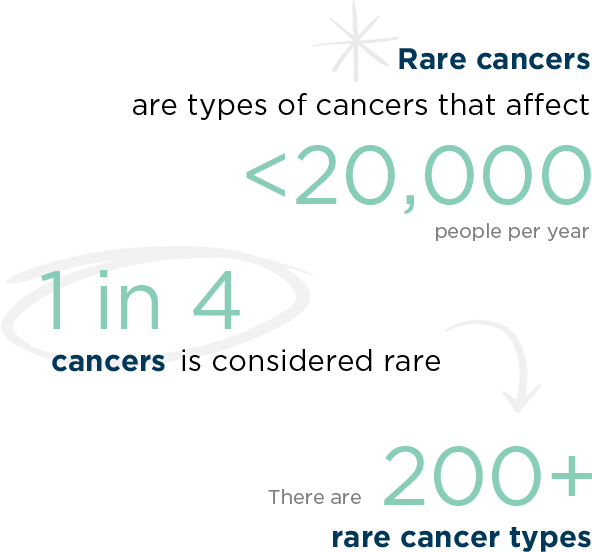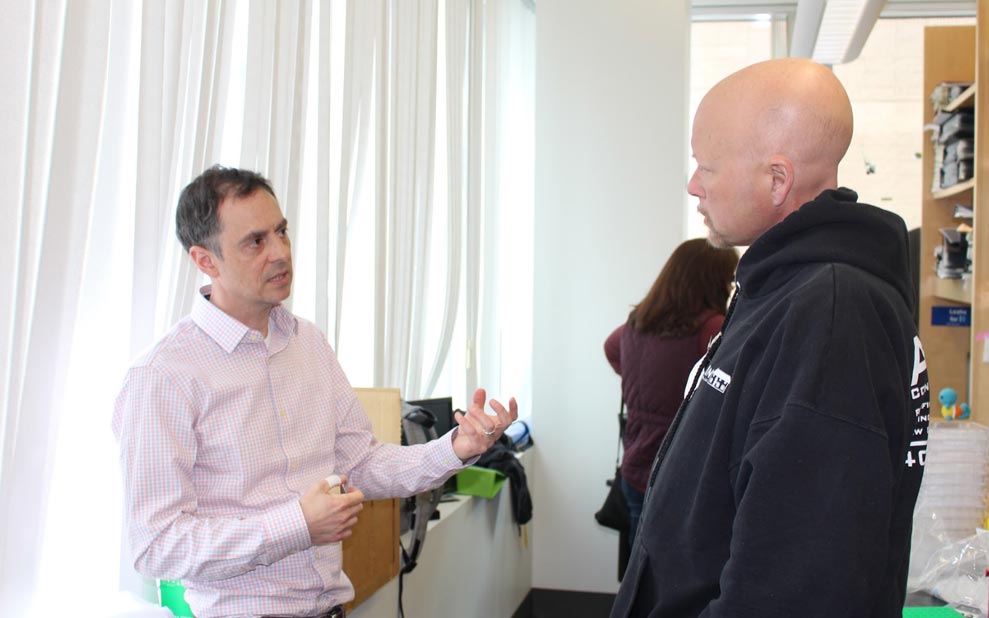According to the National Cancer Institute’s Surveillance, Epidemiology, and End Results (SEER) Program, there are more than 200 types of rare cancer.

But numbers don’t tell the whole story.
Rare cancers can also be defined by the challenges that are consistent among them.
Diagnosis can take a long time.
Rare cancers can be difficult and time-consuming to diagnose. Sometimes, it takes doctors longer to diagnose rare cancers because the symptoms may be unfamiliar or unusual, the doctor may not have experience with that particular type of tumor, and more extensive testing may be needed. Rare cancers can also be misdiagnosed or mistaken for other cancers, particularly if the care team has not seen a case like it before.
Treatment options for rare cancers are limited, with more effective therapies urgently needed.
Developing treatments for rare cancers is challenging due to a lack of research data, financial viability, and small patient populations. As a result, many rare cancers have no treatments specifically designed for them and many people with rare cancers are currently treated with therapies or interventions designed for other cancers. This can sometimes lead to unexpected side effects, quality of life challenges, and low efficacy, making many rare cancers among the most challenging to treat.
Clinical trials can often offer the most effective treatment opportunities when there is no standard of care available. However, the availability of clinical trials is limited in rare cancers.
While the U.S. Food and Drug Administration (FDA) has helped incentivize and speed new drug approvals for rare cancers over the past decade, more personalized, targeted treatments are still urgently needed.
Lack of research tools slows progress.
Lack of funding hinders researchers’ ability to create dedicated research programs, and develop the basic tools needed to make progress — such as cell lines and mouse models — which are easily accessible in common cancers, but often non-existent in rare cancers. Smaller patient populations also mean less tissue to study and less available data, which is a significant barrier to driving research forward.
Rare cancer patients and researchers need our help
Though tumor location, progression, and symptoms vary widely, there are many common challenges shared across the rare cancer community.
Researcher Challenges

- Bleak research funding landscape and lack of attention from major funding sources
- Challenge in recruiting young investigators
- Lack of publicly available research models such as cell lines and mouse models
- Small and disconnected tissue sample repositories
- Difficulty in clinical trial recruitment due to small patient populations
Patient Challenges

- Delayed and/or incorrect diagnosis
- Often no established standard of care with treatments adapted from other cancers
- Lack of specific expertise by physicians
- Limited availability of clinical trials
- Inconsistent awareness of, and access to, biomarker testing
- Feeling of isolation and lack of community

Since 2009, TargetCancer Foundation has been systematically working with partners across the rare cancer community to address these challenges.

Driving Precision Medicine in Rare Cancers
One example of how TargetCancer Foundation is working to accelerate the development of more effective and personalized treatments for people with rare cancers is through TCF-001 TRACK, a clinical trial enrolling 400 patients with rare cancers or cancer of unknown primary.
